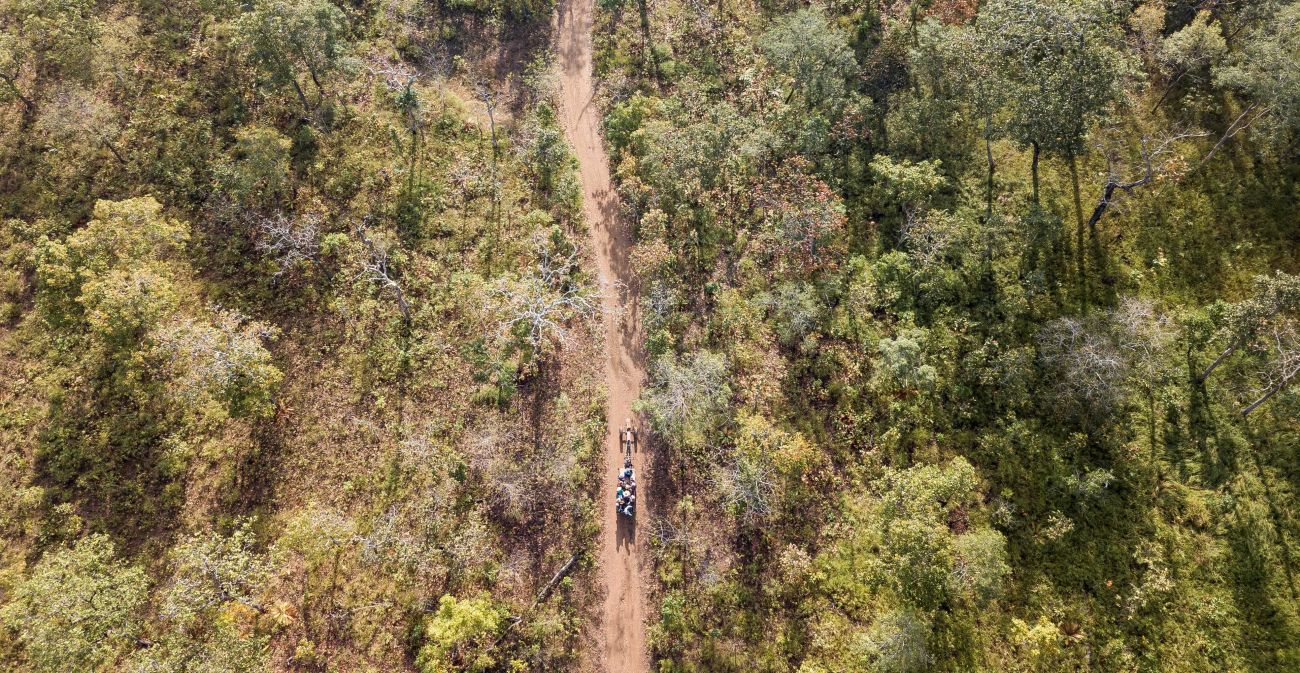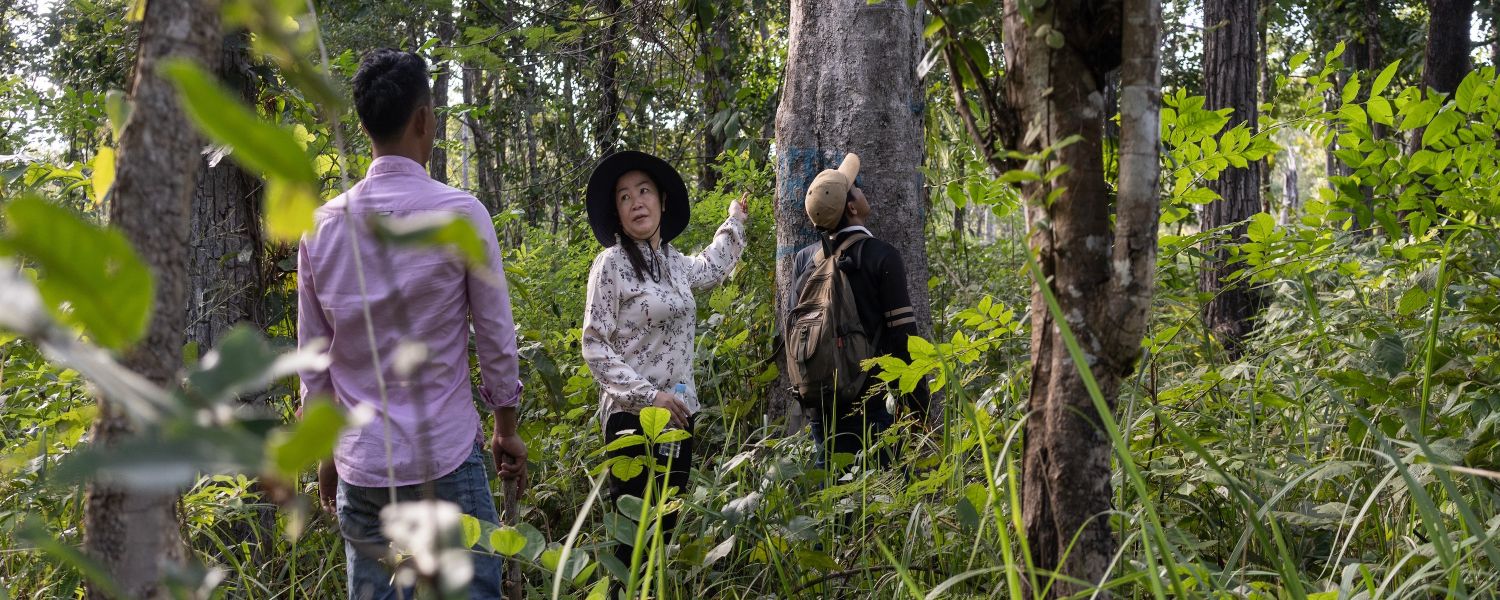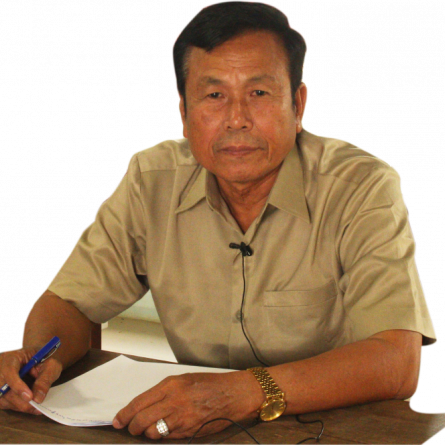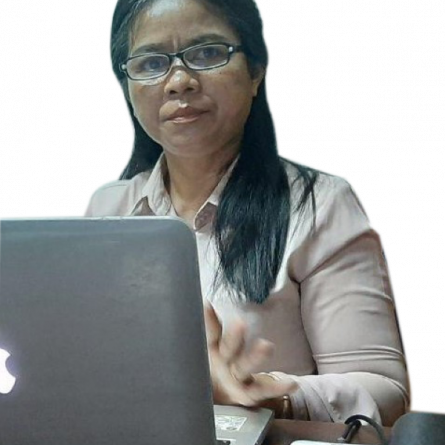

Prey Lang is one of the world’s most important biodiversity hotspots. Its 900,000 hectares contain Southeast Asia’s last remaining lowland evergreen forests, as well as deciduous forests, flooded forests, grasslands, marshes and freshwater mangroves. This highly diverse landscape harbours many endangered, threatened and yet undiscovered species, which are afforded some protection by the Prey Lang Wildlife Sanctuary that covers almost half of the landscape. Prey Lang is home to more than 250,000 people including the ethnic Kuy who represent 33 percent of the population. In their language, Prey Lang means ‘our forest’. For the Kuy and other communities, Prey Lang has spiritual importance and is the foundation of their culture and traditions. This threatened landscape is also important to the region and the world. Its watershed regulates the flow of water and sediments into Tonle Sap Lake, a UNESCO biosphere reserve, and the Mekong River. By preventing floods and droughts downstream, Prey Lang is crucial to the safety and livelihoods of millions who rely on the river for water, fisheries and transportation. Prey Lang’s high carbon sequestration values make the landscape a crucial global asset in the fight against climate change.

Prey Lang by Numbers
-
Total area of landscape: 900,000 hectares
-
Forest cover: 60 percent
-
Prey Lang Wildlife Sanctuary: 431,683 hectares
-
Population: 250,000
-
Poverty rate: 17.7 percent

Entry points for investment to achieve the SDGs
-
Formalizing local communities' rights to manage forests and protected areas
-
Fostering multi-stakeholder participation in establishing zones and guidelines for sustainable management of natural resources
-
Supporting the development of inclusive forest-based business opportunities for women and other marginalized groups
The Prey Lang landscape in Cambodia and the people and biodiversity it shelters are threatened by deforestation and resource extraction. Empowered local communities must lead the sustainable development and the protection of this forested landscape, and at RECOFTC we have the vision, skill, relationships and experience to support their leadership. Since 2006, we have helped the people of Prey Lang to build their capacity to secure their land tenure and resource rights, govern and manage their lands and improve their livelihoods. Today, there are tremendous new opportunities to further support local communities, government, civil society and the private sector to overcome these threats. We offer three entry points for action that will foster prosperous communities and a thriving landscape by capitalizing on the ambitions of local people, our experience in Prey Lang and the work of many other organizations. Through investments in Prey Lang we can contribute directly to achieving the Sustainable Development Goals of the United Nations 2030 Agenda. By 2030, we can lift more than 90,000 people out of poverty, empower 67,000 women to take active roles in decision-making, strengthen the capacity of more than 126,000 people to adapt to climate change and foster sustainable management of 264,815 hectares of forests. And by securing land rights, we can enable Cambodia to foster good governance and mitigate and adapt to climate change.
Challenges
Climate
- Illegal logging and encroachment are driving massive deforestation, increasing the vulnerability of local people to natural disasters, food insecurity and other effects of climate change
- Prey Lang lost 5,600 hectares of forest to logging in eight months between September 2017 and May 2018.
Livelihoods
-
Annual income per capita is less than 1,400 US dollars.
-
Income generating opportunities are limited by policy, capacity and market barriers.
Governance
- Land conflict is escalating as the government grants concessions to companies.
- There are few multi-stakeholder platforms for dialogue, decision-making and conflict resolution.
- The government's capacity to enforce laws and protect the landscape is weak.
Social inclusion
- Local people, particularly women and low-income groups, have limited involvement in decisions on allocation and management of natural resources.

Partners
Local communities
- Ninety percent of community members rely on subsistence farming, harvesting resin, honey, food and timber from 116,552 hectares they collectively manage as community forests and social land concessions.
Government
- National, subnational and district government agencies play a leading role in managing Prey Lang's natural resources.
- State agencies manage about 90 percent of the landscape's forests, covering 544,237 hectares, for both protection and production.
- Government has granted land concessions to 53 companies that manage 234,784 hectares of economic land concessions, 264,693 hectares of mining concessions and 884 hectares of forestry concessions.
Civil society
- The 30-member Prey Lang Community Network supports local communities to secure their land and resource rights, manage their lands and improve their livelihoods.
Our experience in Prey Lang and Cambodia
Since 2006, we have supported communities to secure their tenure rights and ensure a healthy and resilient Prey Lang landscape. Through our work we have become a leading voice in community forestry, recognized and trusted by local communities, the forestry administration, local authorities and civil society. We have:
- Trained 4,594 people, 46 percent of them women, to manage 22,637 hectares of community forest
- Piloted credit schemes in 21 communities that generate 63,000 US dollars a year
- Enabled local communities to secure low-interest loans to improve their livelihoods, establish new businesses, improve agricultural practices, and fund the protection and management of community forests
- Provided legal support for the passage of the Prey Lang Wildlife Sanctuary Decree (2016), which ensured a higher level of protection for Prey Lang
- Established platforms for local communities, authorities and for • share information, concerns and experience on community forestry
In 2008, the Government of Cambodia signed a partnership charter with RECOFTC. Through our work and presence in Cambodia we have:
- Helped more than 50 community forestry groups to formalize their forest rights
- Trained more than 20,300 people in the sustainable management of natural resources, of which 30 percent were women
- Supported 245 local communities in the management of their forests, land and water
- Worked with and strengthened the capacity of 18 civil society and government organizations




